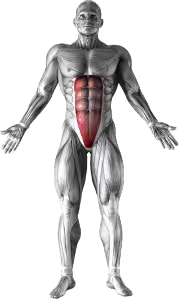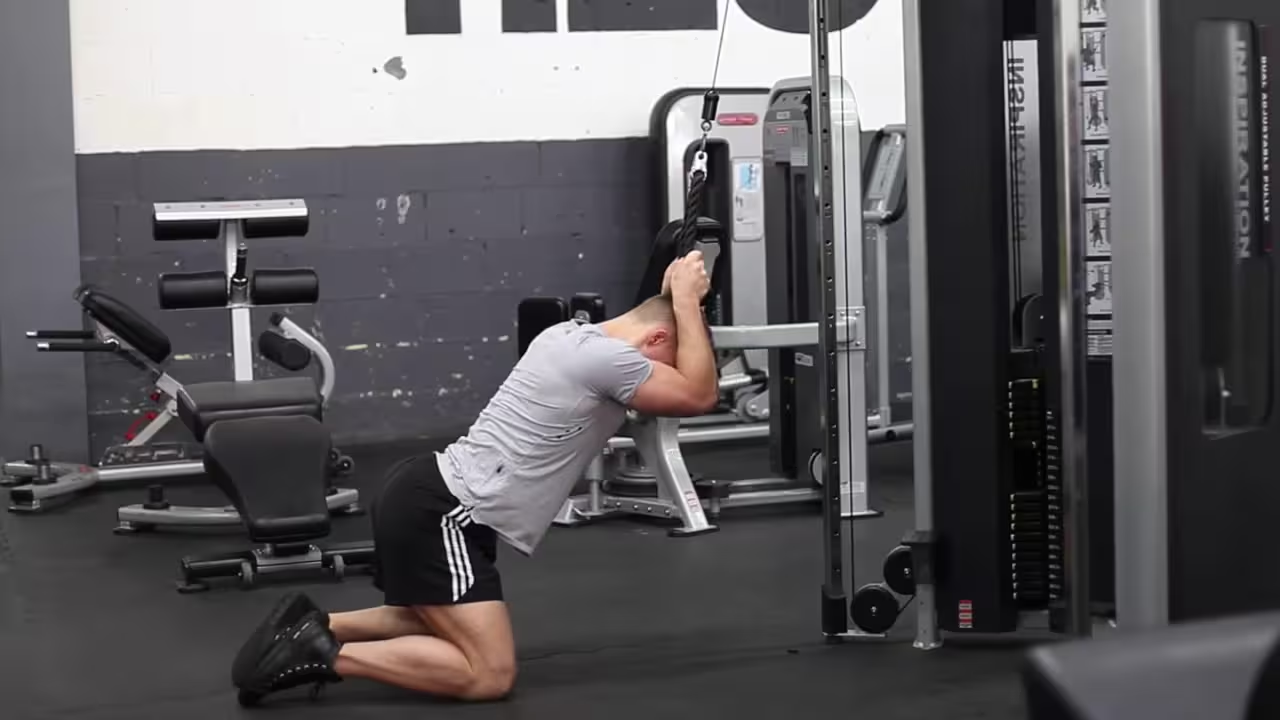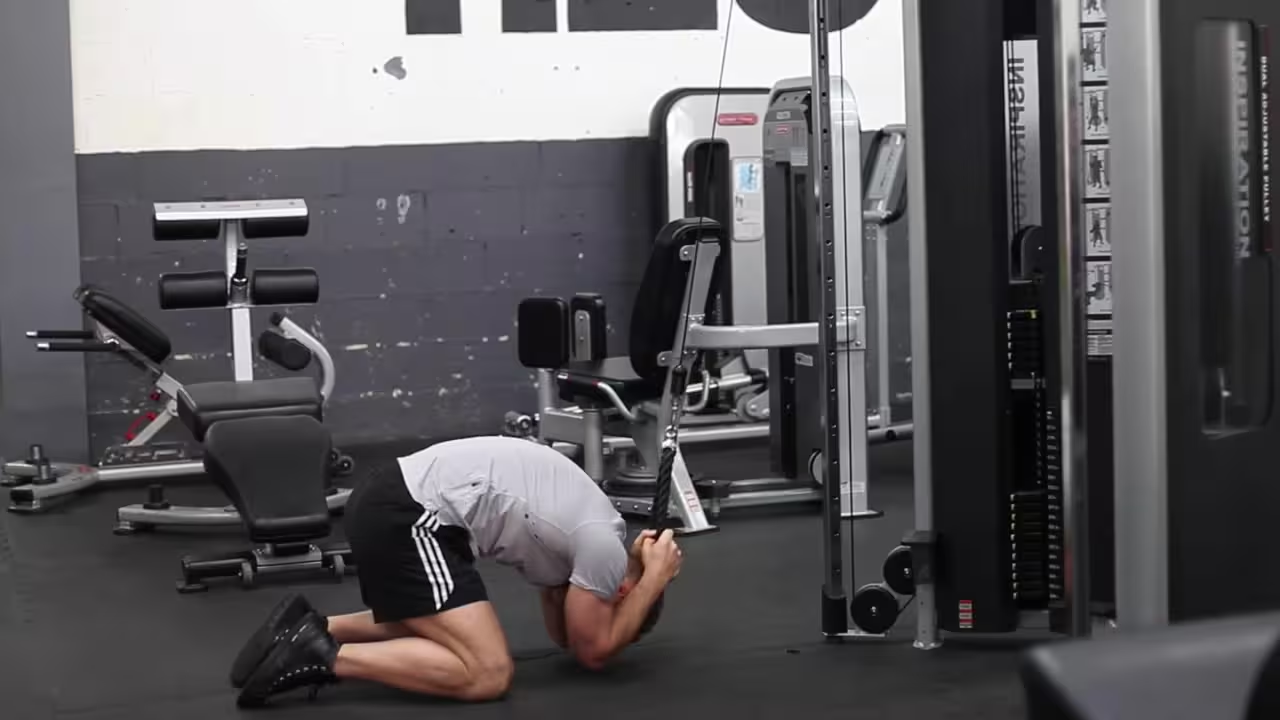The Cable Crunch is a highly effective core exercise that isolates and strengthens the abdominal muscles by using a cable machine. This exercise allows for constant tension throughout the movement, making it an excellent choice for building core strength and improving muscle definition. Cable Crunches can be performed with proper form and control to maximize results and minimize injury risks.
Cable Crunch Video
How to Perform Cable Crunches
Cable Crunch Images
Step-by-Step Instructions:
- Set Up the Cable Machine: Attach a rope handle to the high pulley and set the desired weight on the stack.
- Get into Position: Kneel a few feet away from the machine, gripping the rope handle with both hands. Keep your hands at the sides of your head or slightly in front of your forehead.
- Engage Your Core: Tighten your abdominal muscles and slightly round your upper back to start the movement.
- Perform the Crunch: Pull your torso down toward your knees using your core. Focus on contracting your abs throughout the motion.
- Return Slowly: Reverse the movement in a controlled manner, returning to the starting position without relaxing your core.
- Complete the Reps: Perform the desired number of repetitions, maintaining proper form and control.
Cable Crunch Benefits
- Improved Core Strength: Cable Crunches specifically target the rectus abdominis, enhancing overall core stability and strength.
- Better Muscle Definition: The constant tension from the cable machine promotes hypertrophy, leading to more defined abs.
- Enhanced Spinal Flexion Strength: This exercise strengthens the muscles responsible for flexing the spine, benefiting posture and movement.
- Adjustable Resistance: The cable machine allows for customizable resistance, making it suitable for all fitness levels.
- Efficient Use of Gym Equipment: Incorporating Cable Crunches into your routine ensures effective use of the cable machine for targeted abdominal work.
Cable Crunch Muscles Worked
Targeted Muscles
The Cable Crunch primarily targets the rectus abdominis, commonly known as the “six-pack” muscles. Secondary muscles engaged include the obliques and transverse abdominis, which help stabilize the core throughout the movement.




